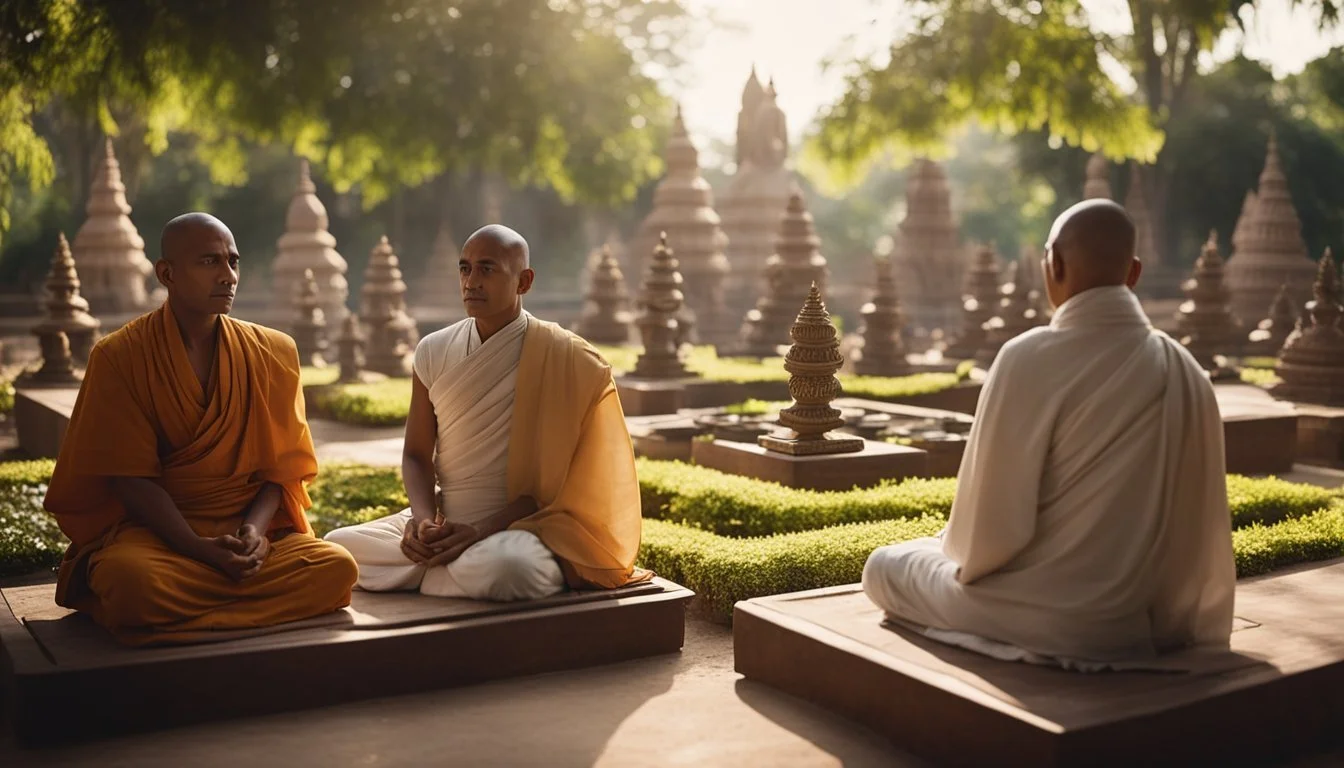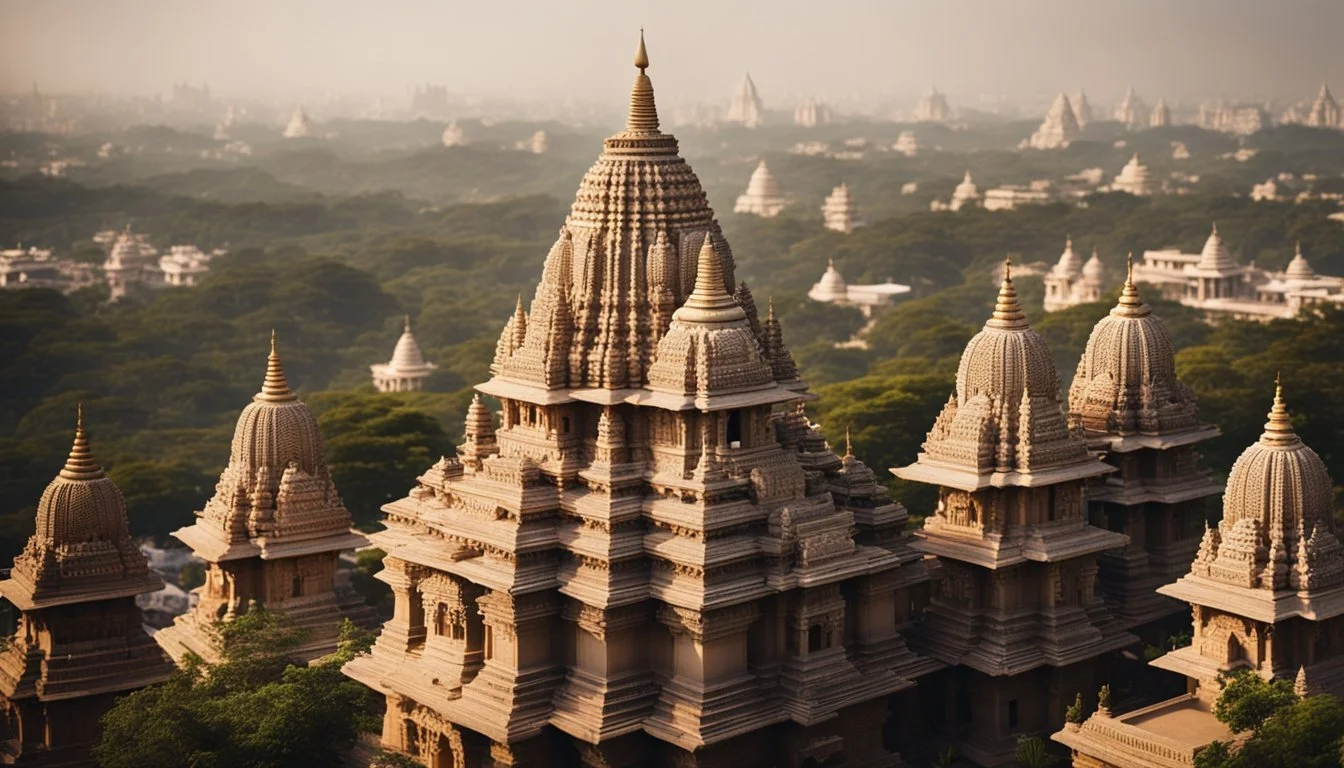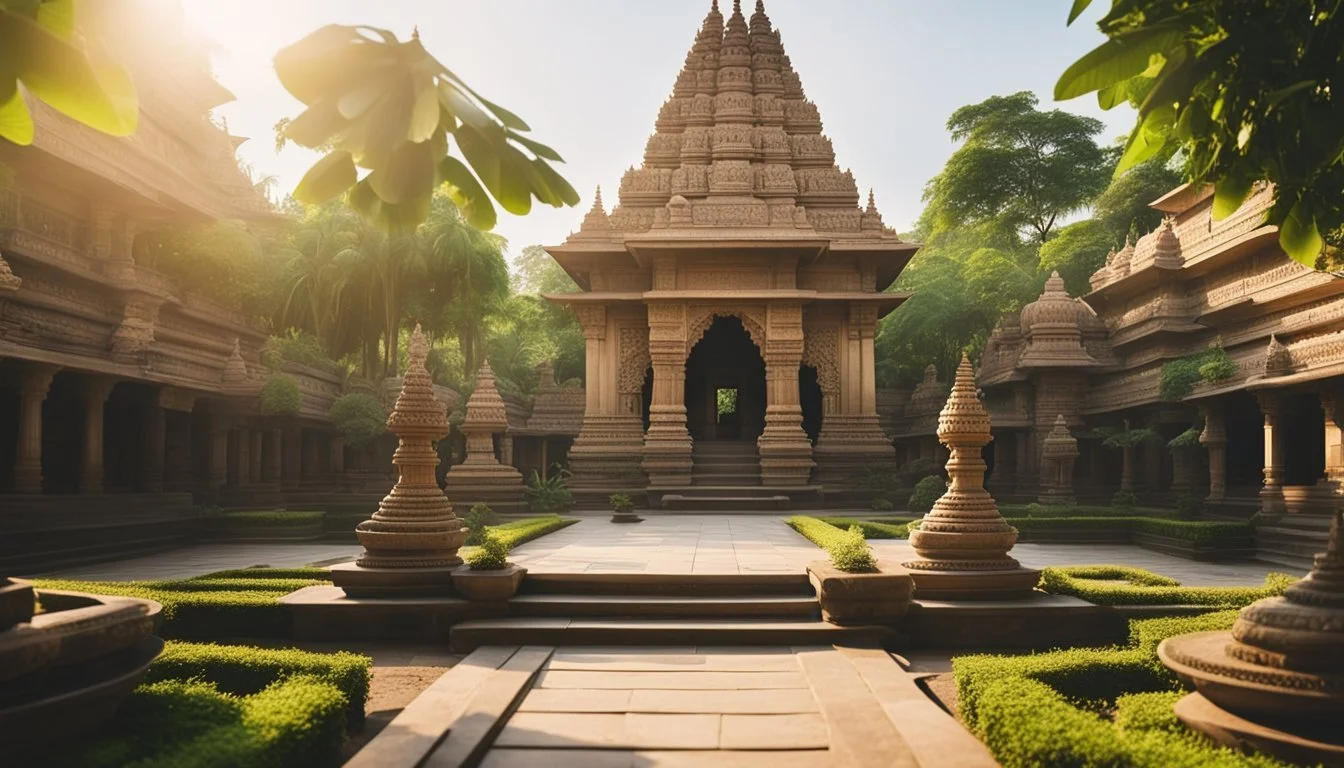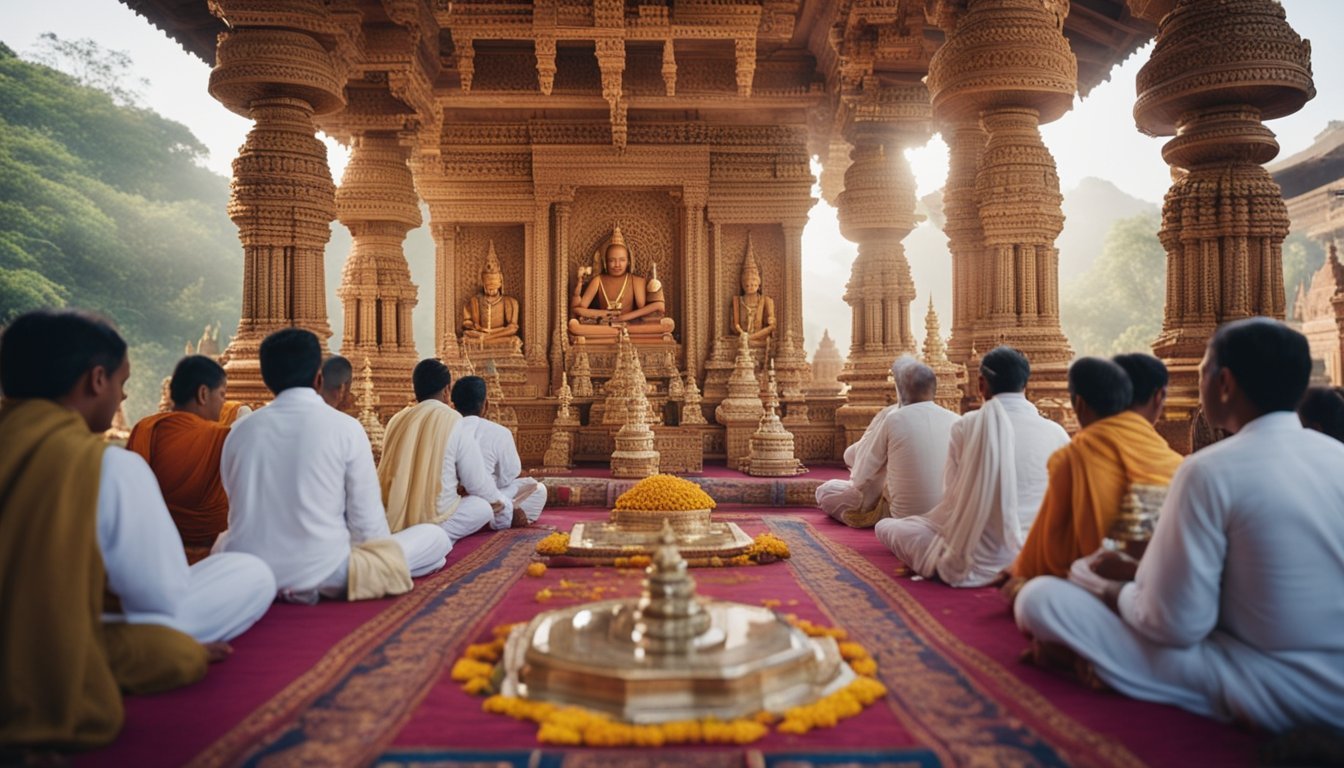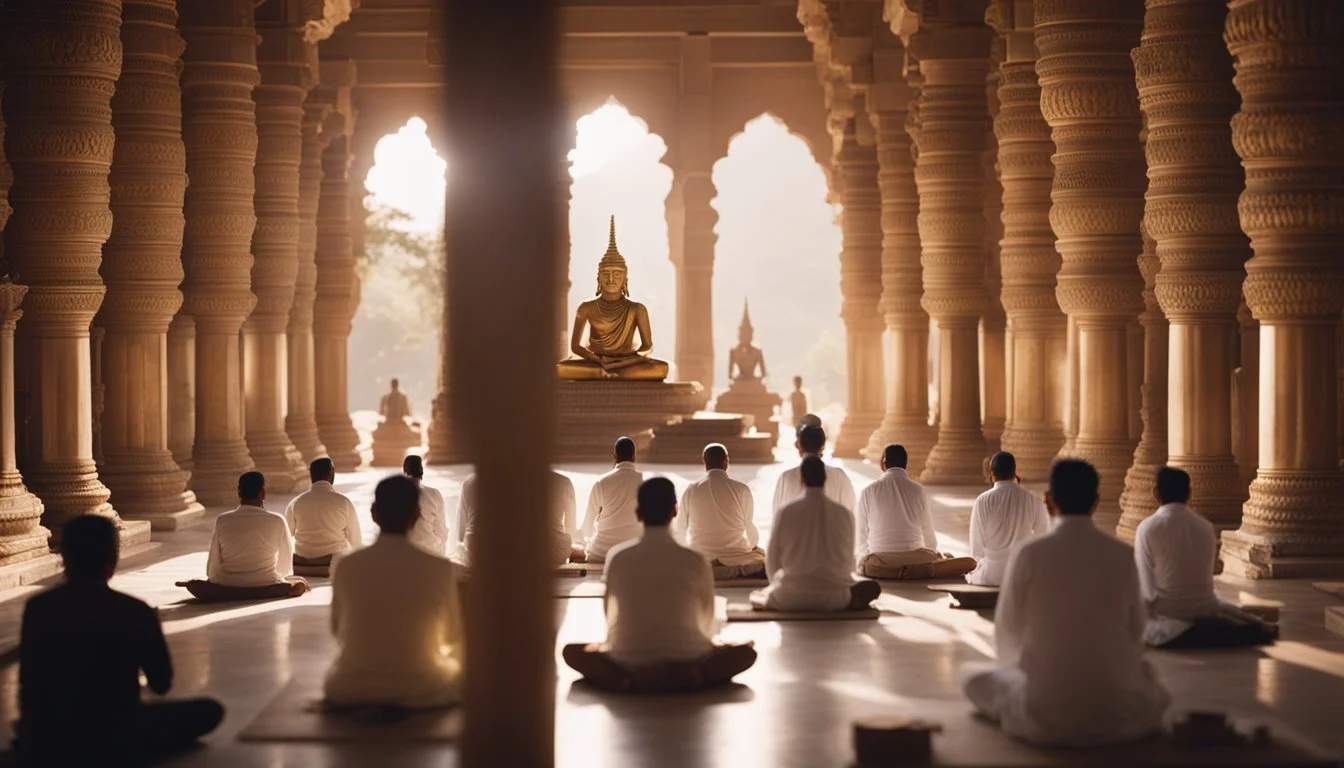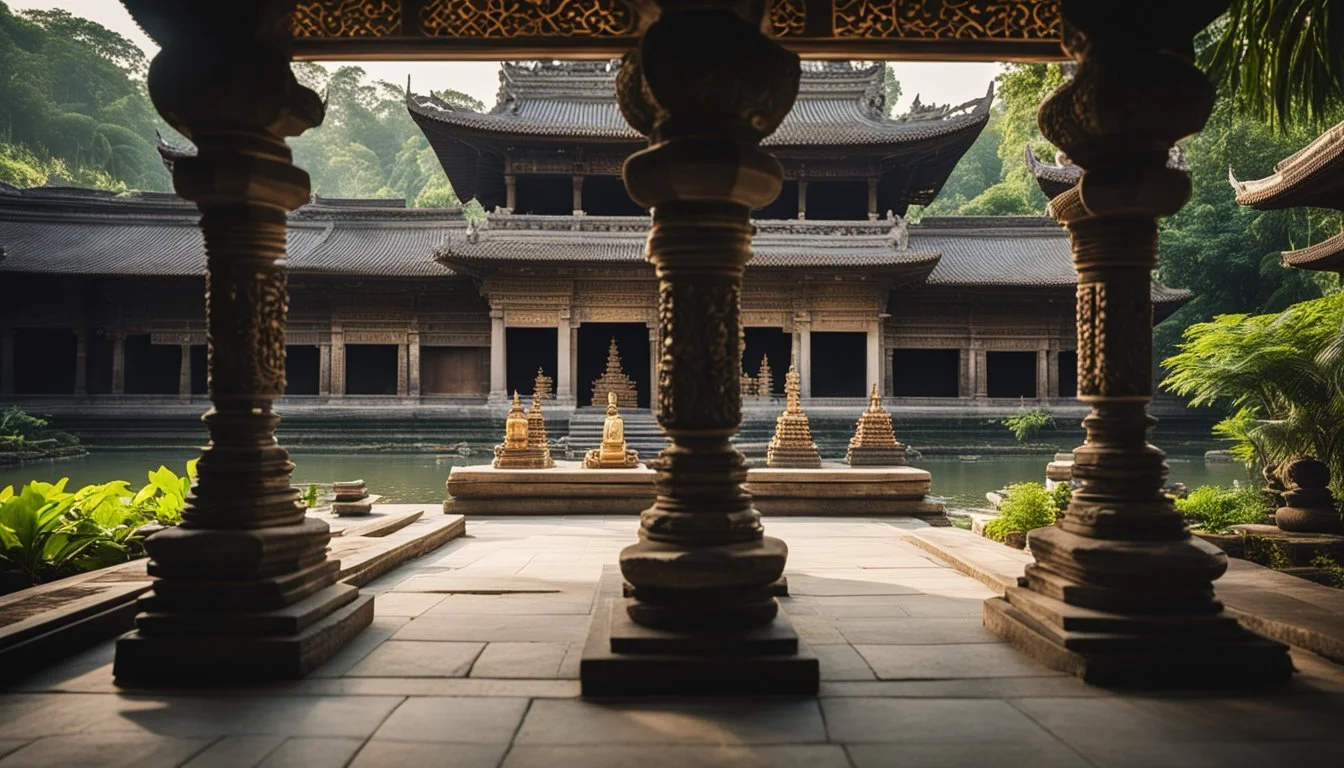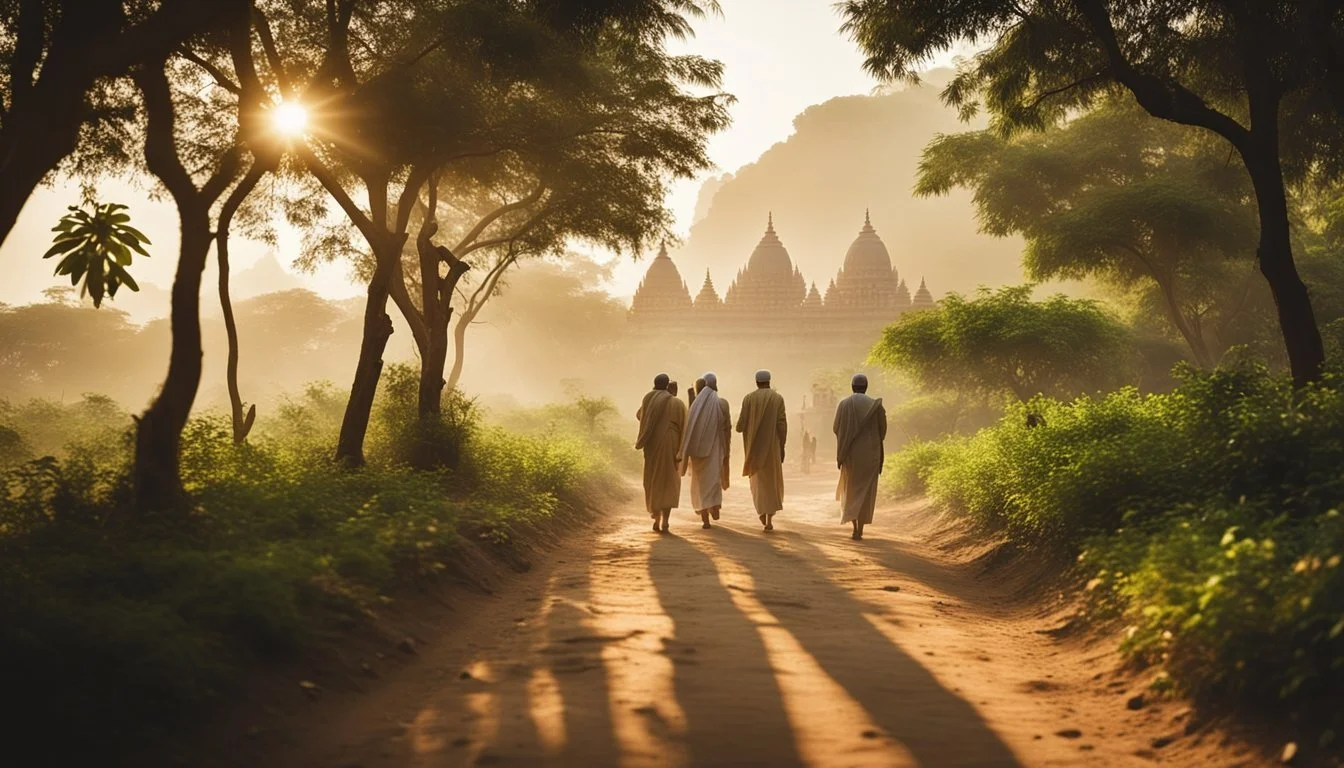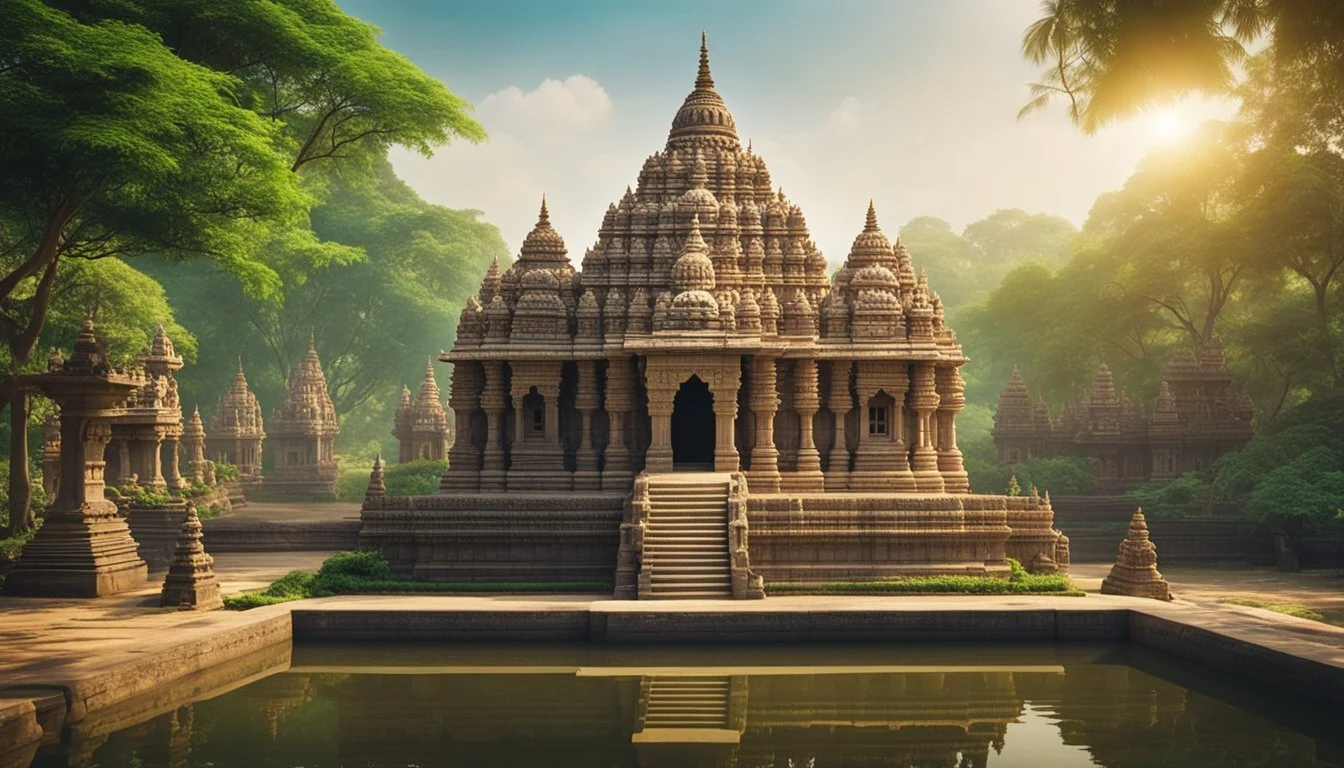8 True Crime Documentaries About Jain Communities
Unveiling Intriguing Cases
True crime documentaries have captivated audiences around the world, offering insights into the darker aspects of human nature and society. Among these, a lesser-known yet equally compelling subset focuses on crimes and social issues within Jain communities.
These documentaries provide a unique lens through which viewers can explore the intricate dynamics and challenges faced by Jains. By presenting real-life cases, interviews, and investigative footage, these films shed light on the complexities of crime, justice, and societal norms in Jain contexts.
1) Secrets of Jain Monks
The documentary "Secrets of Jain Monks" (2019) unveils the often hidden practices and strict disciplines of Jain monastic life. Jain monks follow rigorous codes of conduct, including complete celibacy, truthfulness, and non-possession.
The film highlights how these monks dedicate their lives to the principles of ahimsa (non-violence) and asceticism. Their daily routines often involve walking barefoot, strict vegetarian diets, and hours of meditation.
The documentary also explores the challenges faced by monks in maintaining these ancient traditions in the modern world. Issues such as urbanization and technological advancements pose significant hurdles for monks striving to uphold their vows.
These monks’ lifestyles, rooted in simplicity and spiritual focus, offer a unique perspective on the Jain faith. Their commitment to non-violence extends to all living beings, avoiding harm to even the smallest insects.
For a deeper dive into this documentary, visit IMDB.
2) The Silent Guardians: Jain Temples
"The Silent Guardians: Jain Temples" (2023) offers a deep dive into the world of Jain temples, showcasing their architectural beauty and spiritual significance.
The documentary includes interviews with Jain scholars and devotees, highlighting the meticulous craftsmanship involved in constructing these temples.
One prominent example is the Ranakpur Jain Temple, renowned for its stunning marble carvings and intricate designs.
The film also explores lesser-known temples, such as those tucked away in the hills of Karnataka.
Through breathtaking visuals, the documentary emphasizes the serene atmosphere of these sacred spaces. "The Silent Guardians" captures the peaceful essence that defines Jain worship and temple life.
For more information, visit IMDb.
3) Mysteries of the Jain Order
The documentary "Mysteries of the Jain Order" (2022) explores the ancient and often misunderstood world of the Jain community. The film delves into the principles and practices that have guided Jains for centuries.
Using interviews with scholars and practitioners, it investigates the rigorous rituals that set Jainism apart from other religions.
Through detailed storytelling, the documentary reveals the lesser-known aspects of Jain monastic life. It highlights the community's strict adherence to non-violence and the extensive disciplines of asceticism.
The filmmakers also cover the mystical elements associated with Jain teachings. Viewers get a chance to understand the symbolic significance of sacred texts and ceremonies.
Produced with a keen eye for detail, the film takes the audience on a journey through historic Jain temples. The architecture and art inside these temples offer visual insights into their spiritual world.
The documentary aims to shed light on Jain doctrines that remain enigmatic to many. By diving into these mysteries, it underscores the depth and complexity of Jain thought.
For more information on "Mysteries of the Jain Order," visit IMDb.
4) Jain Rituals: Unveiled
Jain rituals are integral to the faith and daily life of its followers. They encompass various practices, both personal and communal, that aim to purify the mind and soul.
One core ritual is Pratikramana. This is a form of repentance and forgiveness, performed to atone for sins committed during the day. It is observed with deep reverence and introspection.
Paryushana is another significant ritual. This period is marked by fasting and intensified spiritual practices. It serves as a time for self-reflection and renewal of faith.
Daily rituals often include pujas and idol worship. These activities are conducted to honor various Tirthankaras, with offerings and prayers performed regularly.
Sallekhana or santhara is a more controversial and extreme ritual. It involves voluntary fasting unto death, observed by individuals seeking to purify their souls fully. This practice is viewed as the ultimate renunciation.
Rituals in Jainism are diverse but consistently aim to uphold the principles of non-violence, truth, and asceticism. They are embedded deeply within the fabric of Jain culture, influencing not just religious but everyday activities.
5) The Code of Ahimsa: Jain Beliefs
Ahimsa, or nonviolence, is a core tenet of Jainism. It emphasizes the importance of not causing harm to any living beings, whether through actions, words, or thoughts. This principle is not only limited to physical harm but also includes emotional and psychological aspects.
Jains are strict vegetarians, avoiding not just meat but also root vegetables that may disturb microorganisms in the soil. Ahimsa also extends to their professions, where they avoid jobs that may result in harming any form of life.
The concept of Ahimsa is reflected in the lives of notable historical figures and is seen as a path to spiritual liberation. By following this principle, Jains believe they protect their own souls and the souls of others from karmic harm.
Practices such as Sallekhana, a meditative fasting until death, are seen as the ultimate form of nonviolence. This practice reflects the highest adherence to Ahimsa by ceasing to harm even the smallest life forms through action or sustenance.
For more in-depth information, readers can refer to sources like Wikipedia on Jainism and Ahimsa or the available literature on the ethical practices of Jain communities.
6) Historical Episodes of Jainism
Jainism, one of the oldest religions in India, has been marked by significant historical events. These episodes highlight the evolution and influence of Jain communities over the millennia.
Mahavira, the 24th Tirthankara, is a pivotal figure in Jain history. Born in the 6th century BCE, he reformed the existing Jain teachings and established many of the core principles followed today. His journey and teachings have been central to the Jain tradition.
The ancient city of Pataliputra was a hub for Jain activity. During the Mauryan Empire, Jainism flourished under the patronage of Emperor Chandragupta Maurya, who converted to Jainism later in life. Chandragupta's conversion and subsequent impacts on his rule underscore Jainism's historical significance.
The Shravanabelagola in Karnataka holds a monumental statue of Gommateshwara Bahubali, built around 981 CE. This site has been a major pilgrimage center for Jains, reflecting the religious and cultural heritage carried through centuries.
Through these historical episodes, Jainism not only shaped the spiritual landscape but also contributed to the socio-cultural fabric of Indian history. The emphasis on non-violence and strict ethical conduct has left a lasting legacy.
For more detailed accounts on these topics, please visit:
7) Whispers in the Temples
"Whispers in the Temples" (2023) explores the complex relationship between crime and Jain communities. The documentary uncovers several cases where religious devotion intersects with criminal activities, creating a web of deceit within sacred spaces.
Through meticulous investigations, it reveals how some individuals have exploited their positions within the temples for personal gain.
Interviews with insiders shed light on how centuries-old traditions can become grounds for manipulation. Expert analysis and forensic evidence provide clarity on the hidden agendas.
This documentary does not aim to generalize, but it raises important questions about faith and morality. Each case study is presented with objectivity, emphasizing the individuals involved rather than the community as a whole.
Watch the documentary on IMDb.
8) Uncovering Jain Pilgrimages
Exploring the sacred journeys undertaken by Jain communities, this documentary delves into the significance of pilgrimages to ancient Jain temples and holy sites. The film captures the spirituality and devotion inherent in these journeys, providing a glimpse into the cultural and religious practices that define Jain pilgrimages.
Through interviews with pilgrims and religious leaders, viewers gain insight into the rituals performed and the profound sense of community shared among participants. The documentary also highlights the challenges faced by pilgrims, including physical hardships and the need for mental discipline.
The lush landscapes and architectural marvels of Jain temples serve as a backdrop, enhancing the visual appeal and evocative nature of the narration. Each pilgrimage site has its own unique history and set of traditions that are meticulously documented.
Additionally, the film provides context on the importance of pilgrimage in sustaining the Jain faith across generations. It emphasizes the educational aspects for younger Jains who learn about their heritage and religious duties through these sacred trips.
Whether it's the ascent to Mount Shatrunjaya or the journey to Palitana, the documentary paints a vivid picture of the spiritual and communal dimensions of Jain pilgrimages. Wikipedia
Historical Overview of Jain Communities
Jainism, one of the oldest religions in India, boasts a rich historical tapestry marked by significant religious, cultural, and economic contributions. This section explores the origins and development of Jain communities, and highlights key figures who have shaped Jainism throughout history.
Origins and Development
Jainism's roots can be traced back to the 6th-5th century BCE.
Mahāvīra, a key figure in the faith, preached in Magadha, now part of eastern India. Jain communities have diversified over centuries, with notable concentrations in Gujarat, Rajasthan, Maharashtra, and Karnataka. Their influence extends to various spheres, including trade and education.
Jainism's non-violent ethos, encapsulated in the principle of "ahimsa," profoundly impacted Indian society. The community’s emphasis on scholarship yielded a vast array of religious and philosophical texts.
Key Figures in Jainism
Key figures in Jainism include the Tirthankaras, spiritual teachers who have significantly influenced the faith. Mahāvīra, the 24th Tirthankara, is perhaps the most renowned, having systematized its doctrines.
Earlier, Pārśvanātha, the 23rd Tirthankara, set foundational practices.
In modern history, notable Jains like Virchand Gandhi contributed globally, promoting Jain philosophy. Scholarly figures from within the community have also been instrumental in preserving and interpreting its extensive literary heritage.
Prominent Jain philanthropists have supported education and healthcare, reinforcing the community’s enduring legacy.
Cultural Practices of Jain Communities
Jain communities follow unique cultural practices that reflect their religious beliefs centered on non-violence, self-discipline, and respect for all living beings. They observe various daily rituals and celebrate numerous festivals that strengthen their sense of community and adherence to their principles.
Daily Rituals and Traditions
Jains start their day with the Namokar Mantra, a prayer that honors the enlightened souls. Rituals often include meditation and Pratikraman, a ritual of introspection and repentance for past ethical lapses.
Another key daily practice is Puja, usually performed at home or temples. This involves offerings of fruit, rice, and flowers, symbolizing detachment and humility. Fasting is also common, especially during significant religious periods like Paryushana.
Jains follow strict vegetarian diets, avoiding root vegetables to minimize harm to small organisms. Some also practice additional forms of self-restraint, such as not eating after sunset to reduce harm to microorganisms.
Festivals and Celebrations
Paryushana is one of the most important Jain festivals, observed for eight to ten days with fasting, prayers, and community gatherings. It culminates in Kshamavani, the Day of Forgiveness, where community members seek forgiveness for past grievances.
Mahavir Jayanti celebrates the birth of Lord Mahavir, the 24th Tirthankara. It includes processions, lectures, and charitable activities.
Other notable festivals include Diwali, marking Mahavir’s attainment of nirvana, celebrated with lights and prayers, and Kartiki Purnima, involving pilgrimages to holy sites.
Jain festivals emphasize religious observance, community service, and self-reflection, underscoring their commitment to non-violence and spiritual growth.


